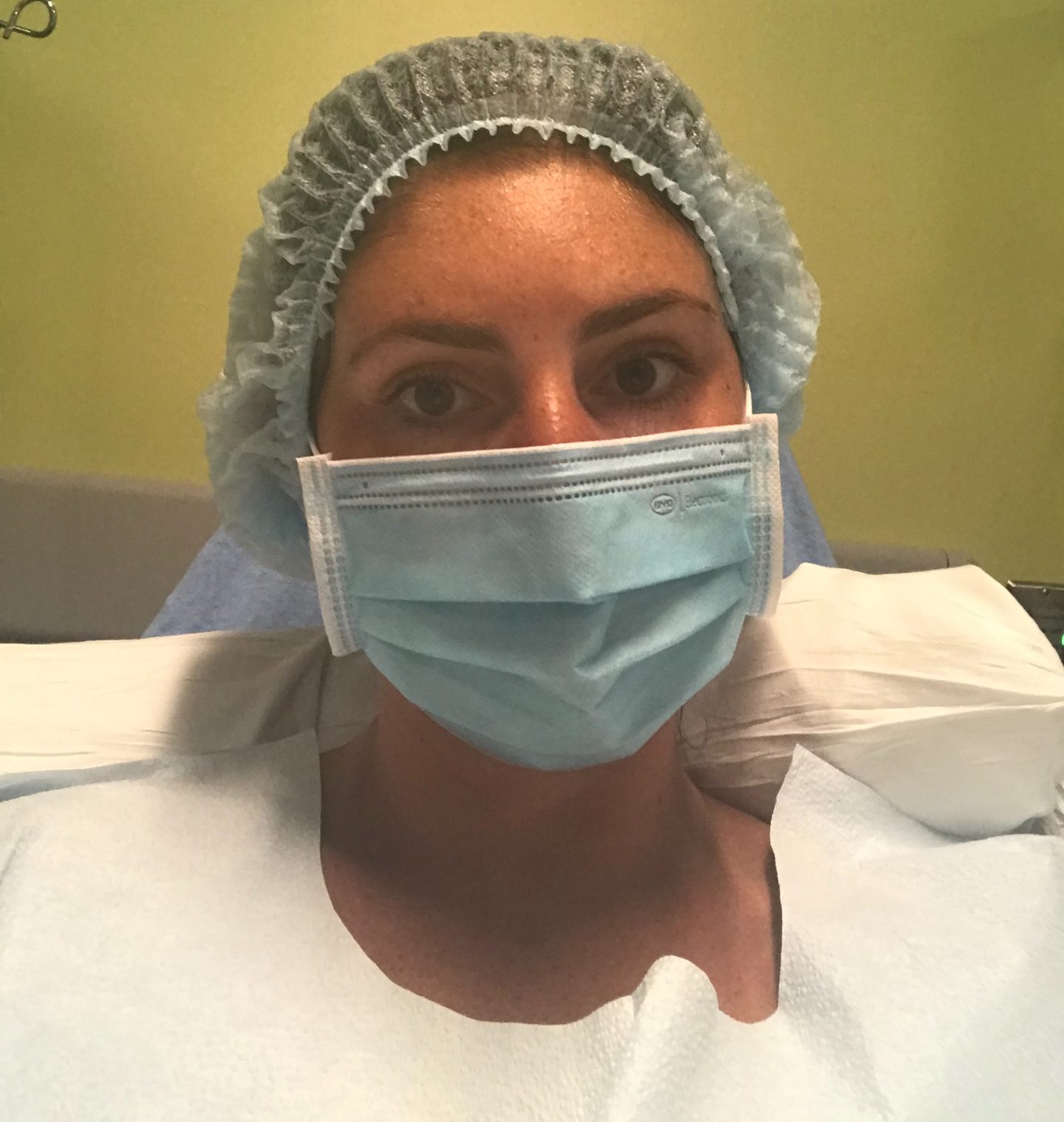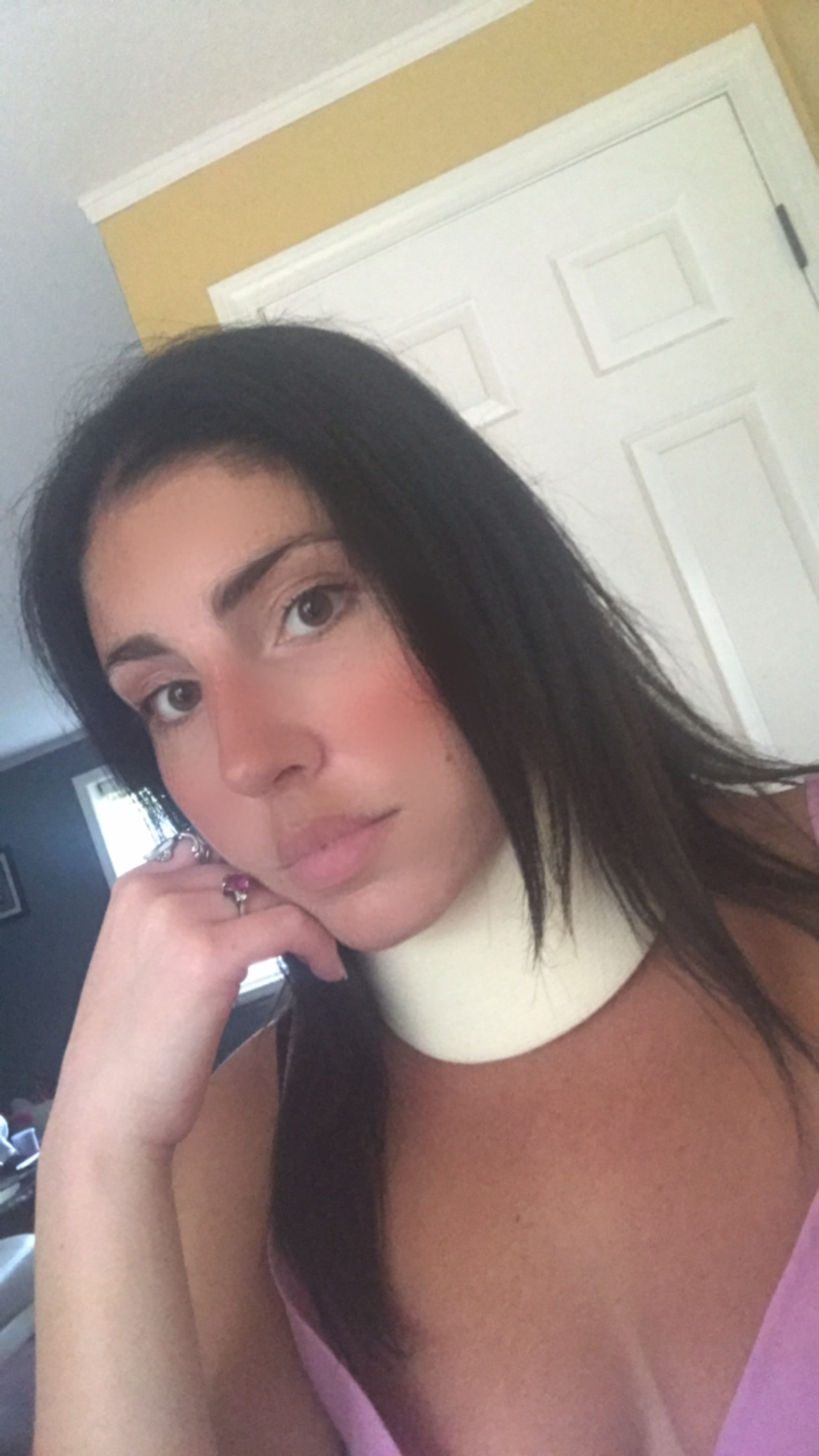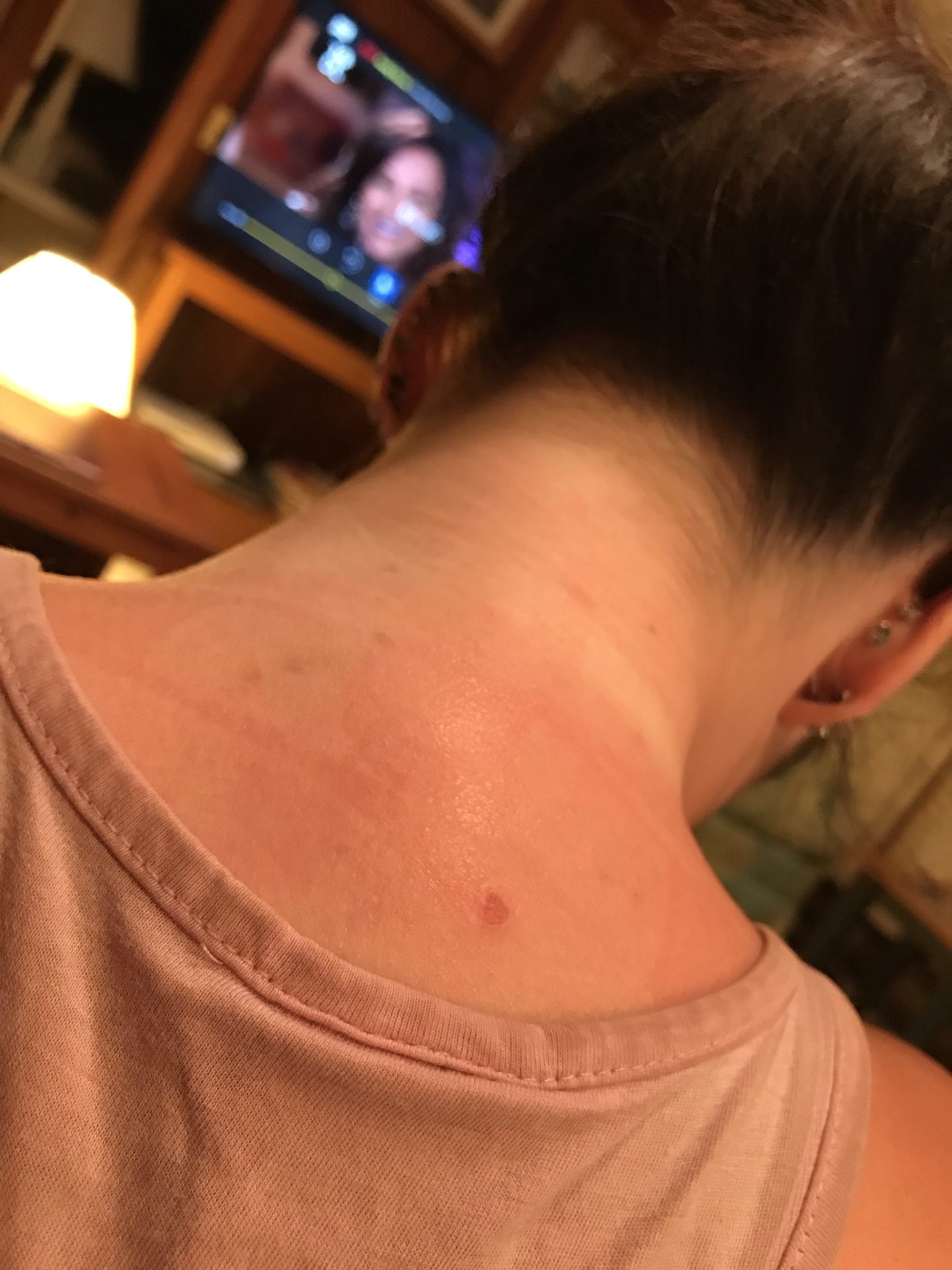
It was a bright, sunny summer day in Rhode Island on June 28, 2021; the temperature creeping upwards towards 80 degrees at 8:00 a.m. It was set to be the first of 3 consecutive days of heat waves. The air was already thick with heat and humidity when I walked out of my house that morning. I didn’t mind it, though. If people could be solar-powered, I would definitely be one of them.
I woke up earlier than usual that morning to give myself extra time to have a quick bite to eat and meditate before leaving for my 9:15 appointment. The sun was beating down on me as I worked through one of my favorite meditations, focusing on breathing deeply and steadily, and I soaked it all in. The sun was shining and it was my grampie’s birthday, both of which I took as a good sign.
Despite the major appointment I was going into, I felt calm. I felt calm and optimistic. The good thing about going into this was that I’d been through something similar two times before. It was standard procedure to do two branch block injections before doing a radiofrequency ablation. A radiofrequency ablation–RFA for short–is a minimally invasive procedure that uses an electrical current to destroy a part of nerve tissue; once that nerve tissue has been destroyed, there should be some pain relief, and the nerve receptors carrying pain signals to the brain will let up or be cut off completely. Basically, a doctor goes in and cauterizes the nerve endings in a specific area, the idea behind it being that once the area has been burned and pain signals are no longer being carried to the brain, the area surrounding this injection will relax, ultimately providing pain relief. The pain relief can last anywhere from 6 months to over a year.
The reason I was able to get an RFA that day was because of the fact that my two rounds of medial branch block injections were successful–I saw 50-75% improvement in my neck pain, something I never thought possible. I had a choice of whether or not I wanted to go under anesthesia for the RFA, and I opted not to, due to the fact that I had been able to handle the branch block injections fine, and going under anesthesia can take a lot out of you. It requires more prep going into the procedure, and can slow down recovery after.
And so, despite the fact that I was not going under and would be awake for the procedure, I still felt calm. My RFA would be done in the same spots they had performed the branch block injections–in between C5 and C6, and C6 and C7 on both sides of my neck. As I was waiting to be wheeled in to the surgical room, I made sure to take slow, deep breaths, keeping myself grounded and my heart rate down. When the doctor came in to go over everything and have me sign my consent, he told me that he was feeling very optimistic for me, and that he had a good feeling about this. That only added to my hope and optimism–two things I never thought I’d have with my neck. I signed my consent, 3 nurses came in to grab me, and then, we were off.
I’m not sure exactly how long the procedure took–maybe 30, 45 minutes, or an hour; time, for me, was nonexistent–but when I was told I did amazing and that the procedure was done, I remember being surprised. I’d felt the right side more than the left (because I was smart enough to ask for more local anesthetic on the left side), but I’d barely felt anything. I had no idea when they’d gone in and burned my nerve endings. I was excited, though, because the nurses kept telling me how well I did, and how much of a trooper I was. I’d been breathing steadily during the procedure in order to try and keep my heart rate down, and their words made me feel better about how well it all went. I was also happy because in post-op I’d be getting cookies.
It was around 11:00 a.m when one of the post-op nurses put me in a wheelchair and wheeled me out to my boyfriend’s car. By now, there was no denying that it was hot. It was almost 90 degrees and the temperature was set to still climb. It wasn’t the most ideal situation for this specific procedure–the injection site can’t get wet for 24 hours, so you can’t sweat, swim, shower, or do anything else of the like, and the injection site also cannot be submerged for 48 hours, so no baths. hot tubs, swimming, etc.–and a heatwave might’ve posed a challenge had I been going back inland to my condo. Luckily for me, though, I was headed back to the beach house, where the air is always slightly cooler and filled with a nice ocean breeze, the salt air is refreshing, and the shade keeps you cool. Once we got back, my boyfriend settled me into a comfy lounge chair underneath a large tree in the shade. It was actually a beautiful and extremely cool place to recover. The view of the ocean undoubtedly made it better.
But I have to admit, even though the view was nice, it did nothing to quell my pain. I had been forewarned that this was a more painful procedure and recovery than the previous two injections, and the recovery time could be a lot longer. Generally speaking, the recovery time for the pain from an RFA to wear off and start kicking in is 4-6 weeks. I was told to rest, rest, rest. Take ibuprofen and ice if needed, no heat. But even though I had been forewarned, I still wasn’t expecting it to be so intense. I got a shoulder surgery without batting an eye, opted to not go under for any injections even though I could have, and yet I was in an incredible amount of discomfort and pain.
I was not expecting to be so sore; the area where the procedure had been performed was so tender it hurt to lay back on a chair. I couldn’t hold a book up to read, lift or hold my cell phone; sitting up was difficult and I required assistance. I couldn’t cut any of my own food or lift up a plate, my food had to be cut up and plates placed on my lap so I wouldn’t pull on anything and hurt myself. I needed help dressing and undressing. I was nauseous at some point every day until about Friday (about 22% of people talk about experiencing flu-like symptoms, I was one of them). The area surrounding where the procedure was performed became swollen; I had to ice it daily.

I called one of the doctors about 9 days after the RFA to make sure the swelling I was experiencing was normal. She reassured me that everything was fine, and yes, that it was completely normal and to be expected, and then gently reminded me to rest and give it time. She said that around 3 weeks people usually start to feel better. I took heed to her words and continued resting and taking things slow.
One of the hardest things for me was still trying to work around my normal life while recovering. I was still continuing to try and get my blog posts out on time–every Monday, Wednesday, and Friday–while also trying to enjoy my time at the beach house. Admittedly, I know that sounds like a first-world problem, but when you’re in oceanic paradise for the summer and can’t swim the way you want to or planned to after the RFA, lay back on a lounge chair with a good book to read while soaking up the sun, it can be frustrating. After my branch block injections, typing and reading were one of the biggest things I saw improvement in, and I was so hopeful and excited to be able to do them, it felt like a tease still having to wait. I’d consider myself a pretty patient person, but it felt like I could see the light at the end of the tunnel, and yet I still couldn’t reach it. I’d been waiting for so long for some pain relief, it was somewhat devastating to realize that I’d still have to wait a bit longer. I was frustrated. I’d been living in so much pain from an injury that was always on my mind that had now been amplified any time I tried to do anything because I was extra worried about aggravating the procedure and prolonging my recovery even more. The things that would normally offer me an escape–reading, laying out in the sun, playing The Sims 4, watching TV–were ineffective because I was worried about aggravating the RFA. Working on Flawless World became stressful, my creativity felt blocked. I still couldn’t escape this chronic injury and pain that had been plaguing me for years. I finally broke down one day in tears and explained to my boyfriend everything I was feeling, and I also admitted that I was still scared that the RFA wouldn’t work, and that I’d be right back at square one again.
I decided to take a step back and take 2 weeks off from Flawless World and everything else. I knew that I needed to focus on my recovery. I needed to take time for myself mentally and physically, even though it pained me to. It was frustrating because I feel like I’ve hit so many roadblocks with this injury–I’ve had so many doctors appointments, ups and downs–that have interrupted my daily life, work flow, and creativity, I didn’t want to surrender to this injury again. It was a tough choice, but it was the right thing to do. Refusing to relinquish control and focus on myself and my recovery would’ve only prolonged everything, and would’ve led to some mental exhaustion or breakdown eventually. I quickly realized that letting go of everything else and prioritizing myself and my health was the right decision. Once I decided to do that, it felt like a giant weight had been lifted off my shoulders. Being able to relax allowed me to gently ease and re-accustom myself to things again. I was able to go in the water for a little bit even though I couldn’t fully swim; I was able to read outside if I kept the book propped in my lap. Slowly–so slowly, I think I may have been unaware of it–the pain began to lessen.
Now, it’s been 6 weeks since my RFA, and I can’t believe I’m saying this, but it’s worked. It’s worked as well as the branch block injections did, giving me about 50-75% pain relief. I knew, based on the two injections prior, that this wasn’t going to be foolproof. As of right now, there isn’t anything in the world that can give me 100% relief and would get me to where I was before my car accident in 2017.
RFA’s, sadly, are not a permanent solution; they typically last anywhere from 6 months to over a year because nerve endings do grow back. Once that happens, it’s typical for patients to go back for another consultation and get this procedure done again, and again, and again. The idea around doing it multiple times is that eventually, after the nerve has been burned several times, it’ll be so dull and numb that the patient either won’t feel it or get affected by it. So, yes, there is a very good chance that I will have to get more RFA’s done in the future. And yet, despite all the pain post-op, the length of recovery, the soreness, the swelling, the daily icing, the nausea for a few days, I would get this done again in a heartbeat. I am not free of pain, but I am so much better than I was before. I still can’t do certain things–e.g: reading and typing–for a long period of time, but I’m able to do them more than before. The mobility in my neck is nowhere near where it was prior to the accident, but it has improved. I never thought I’d be able to watch TV and get comfortable for a little bit–the idea was simply unfathomable to me–but now I have moments where I’m able to. All of the little things we all take for granted every day I can now do a little bit of.
Am I fixed? About as much as I could be. Am I back to the way I was before the accident? No, and I never will be. I’ve had to come to terms with this injury and what it means for the rest of my life. I had to come to terms with the fact that my neck is never going to go back to the way it was before. I had to come to terms and make peace with the fact that I would never wrestle again, and I had to let that dream go so I could finally move on, once and for all.
Coincidentally, in the weeks following my RFA, that bright, hot sun was replaced with cold, gray clouds of rain and overcast skies. As some doubt began creeping in–doubt about whether it would work, doubt about how I was going to live the rest of my life in pain if it didn’t, doubt that I hadn’t really experienced such good results with the branch block injections and that they were all just simply a figment of my imagination and I got the RFA done for nothing–the weather turned. The irony of the days being full of heat while I was optimistic going into and right after the procedure, only to be replaced with cold temperatures and no sun in sight while I was second-guessing everything is not lost on me. The weather seemed to match my mood.
In those dark moments, you have to have hope; even if it’s just a sliver of it, you have to hold on to it. You have to believe that things will get better, that it won’t be dark forever. You have to believe that the sun, somehow, will find its way out again. You have to be patient, give things time. You have to let go of what you can’t control, and make the best and most out of what you can. You have to live life and each day fully and get outside no matter how you’re feeling or how uninviting the weather may be. You have to step into the ocean and get your head wet at least once a day. You can’t wait around for things to happen, for the sun to shine once more. During my two weeks off, I made myself go on a walk every morning and go in the ocean at least once a day, no matter how cold it was. Making myself get up and out of the house through walking helped get me out of my own head and moving, and taking a dip in the ocean was so invigorating, refreshing, and quite meditative. I came to enjoy the overcast days when no one else was on the beach. I’d take a quick dip in the water, come out, and sit at a picnic table all by myself. I took the time to look around, feel the Earth and sand beneath my feet, allow to energy of the universe to come into my body. I slowed myself down, and appreciated the beauty of the world in front of me. I’d also take The Book of Awakening by Mark Nepo with me, and I’d read the daily passage and do the meditation exercise while there. All of this was extremely therapeutic, and something I’d highly recommend to anyone struggling, feeling lost, or overwhelmed. It was all incredibly grounding.
The sun has come out again now, and the past few days have been hot–perfect beach days, exactly what summer dreams are made of. And along with it out came my glimmers of hope and optimism. It’s time to go feel the sun on my face, spend some time floating in the Atlantic Ocean, and enjoy the present day. Whatever lies ahead, I know I’ll be able to handle.








